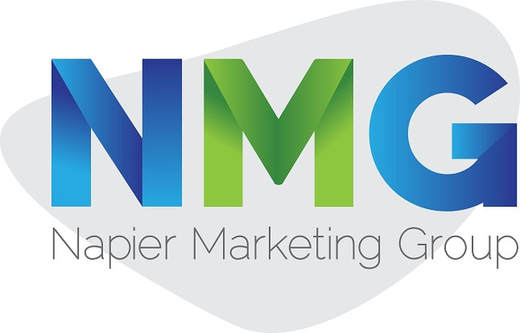7 Principles to Guide Your Digital Transformation
Digital transformation isn’t considered an option anymore but rather a must. This means that companies who disregard it will have to adapt to the new normal.
Digital transformation is the backbone of starting both the cultural and digital transformation that an organization (public or private) needs. It is now considered a main survival factor, and since digitalization differs, how a business implements it is all that matters.
Digital transformation refers to the process of adapting to continuous changes made to digital technologies that are affecting society and businesses around it. Digitalization trends are only made possible through three main methods:
Let’s find out the main principles you should be following for digital transformation.
Digital transformation is the backbone of starting both the cultural and digital transformation that an organization (public or private) needs. It is now considered a main survival factor, and since digitalization differs, how a business implements it is all that matters.
Digital transformation refers to the process of adapting to continuous changes made to digital technologies that are affecting society and businesses around it. Digitalization trends are only made possible through three main methods:
- Business model innovations
- Digitalization of products & services
- Emerging new platforms
Let’s find out the main principles you should be following for digital transformation.
7 Principles that will guide you to digital transformation
1. Set a transformative vision
|
According to a Gartner survey, 63% of business leaders claimed that they don’t really know about the possibilities associated with next-gen technology. In addition to that, only 13% of the respondents said that they have already identified the next digital transformation investment.
The idea is simple: a company that lacks a transformative vision won’t think about digital strategy and even won’t seek to improve digital transformation to make real-time improvements. |
Before a digital transformation is implemented, it needs to be created and communicated.
2. Build an engaging digital customer base
Nowadays, we have come to a point where product portfolios are applications and are no longer distributed through digital channels. With this digital transformation, companies are requested to adapt and shift their business models to deliver new and exciting personalized customer experiences for maintaining continuous engagement from their customers.
A successful digital transformation is good at personalizing with customers to increase engagement. Three different characteristics are used in order to build an engaging digital customer base:
3. Start using virtual assets- cryptocurrencies
2. Build an engaging digital customer base
Nowadays, we have come to a point where product portfolios are applications and are no longer distributed through digital channels. With this digital transformation, companies are requested to adapt and shift their business models to deliver new and exciting personalized customer experiences for maintaining continuous engagement from their customers.
A successful digital transformation is good at personalizing with customers to increase engagement. Three different characteristics are used in order to build an engaging digital customer base:
- Front-end customer experience is the new route of digital technology, while in the past, they were more focused on customer relationship management (CRM) and back-office marketing automation.
- Building new methods of how your existing product or service can adapt to your digital customer.
- Using a set of applications enables a digital ecosystem that will automate customer experiences through data, cloud, social, and mobile.
3. Start using virtual assets- cryptocurrencies
|
Virtual assets are the new digital representations of value that can be transferred, traded, or even used for payment or investment. There has been a considerable rise in interest regarding cryptocurrencies and their use. Bitcoin (B) and Etherium (ETH) are the top two most used cryptocurrencies worldwide, and both have high values that continuously change day by day.
In 2020, the market size of cryptocurrencies grew to $1.49 billion and is expected to rise to $5 billion by 2030. |
Additionally, blockchain spending rose to more than 50% only in 2021. Digital wallets that use crypto are spreading and have exceeded 75 million in summer 2021.
For this reason, virtual assets such as cryptocurrencies are part of the digital transformation process of a business. While people are still confused about how to buy ETH, Bitcoin, or any other cryptocurrency, we don’t know how big the crypto market may actually get.
However, we know that it can be used as a digital asset and may even be the primary source of payment in the future. So, the best thing we can do is adapt to it and know how it works.
4. Adapt to the newest technologies
For this reason, virtual assets such as cryptocurrencies are part of the digital transformation process of a business. While people are still confused about how to buy ETH, Bitcoin, or any other cryptocurrency, we don’t know how big the crypto market may actually get.
However, we know that it can be used as a digital asset and may even be the primary source of payment in the future. So, the best thing we can do is adapt to it and know how it works.
4. Adapt to the newest technologies
|
Adapting to the newest technologies that suit your business increases agility and demands it from users. If we are seeking to adapt to the newest technologies, we have to pay attention to the following:
|
This is how we remain active in adapting to the newest technologies and a great way of building agility when trying out new products or services that include new technology.
● Cloud-based infrastructure: digital cloud-based environments increase adaptation to new technology. If you use newer technologies, you will see that most of them will offer you cloud-based services, which is a good option for security purposes and collaboration.
● De-coupling: Using systems that are related to one another but can act independently, not causing any issues if one of the systems fails/stalls.
5. Meet end-user demands
Whenever you start using more technology in your business and develop it to a higher level, you will also see a vast increase in demand from your users. They want to have the freedom of interacting from any place and time. The new technology invested in the public sector also needs to understand the user, such as their needs and demographics.
Additionally, you need also to place importance on the design of new technology to fit the overall needs of users. The good thing about digital transformation is that it can effectively combine all data regarding interactives, create new solutions, and improve personalization.
Furthermore, digital transformation, in other words, can be considered a requirement for your business since it can be seen from an angle of solving problems and fulfilling the needs of those who interact with it. In short, you are improving service quality and the end-deliverability results whenever you use a targeted response.
6. Use insights with the data you have gathered
Gathering data isn’t necessary only to have it, but to visualize it and act upon it to generate new insights. If you want to unlock the treasure of real-time data for unified and dynamic customer engagement, then you have to use customer personas and even micro-segments.
Many businesses worldwide actually have a reasonable amount of valuable data; however, some of that data lacks the ability to generate valuable predictive and demographic insights. Most high-end businesses that pay attention to data use data visualization to communicate all of their information clearly to users through infographics, charts, statistical graphs, and even plots.
According to a study, data visualization helps tell stories, gives accurate insights, and even helps share information much easier than you would without it. On the other hand, it also helps executive decision-making regarding technologies much more manageable. In addition to that, it reduces application development costs and even re-work.
7. Embrace digital agility and learn from your mistakes
● Cloud-based infrastructure: digital cloud-based environments increase adaptation to new technology. If you use newer technologies, you will see that most of them will offer you cloud-based services, which is a good option for security purposes and collaboration.
● De-coupling: Using systems that are related to one another but can act independently, not causing any issues if one of the systems fails/stalls.
5. Meet end-user demands
Whenever you start using more technology in your business and develop it to a higher level, you will also see a vast increase in demand from your users. They want to have the freedom of interacting from any place and time. The new technology invested in the public sector also needs to understand the user, such as their needs and demographics.
Additionally, you need also to place importance on the design of new technology to fit the overall needs of users. The good thing about digital transformation is that it can effectively combine all data regarding interactives, create new solutions, and improve personalization.
Furthermore, digital transformation, in other words, can be considered a requirement for your business since it can be seen from an angle of solving problems and fulfilling the needs of those who interact with it. In short, you are improving service quality and the end-deliverability results whenever you use a targeted response.
6. Use insights with the data you have gathered
Gathering data isn’t necessary only to have it, but to visualize it and act upon it to generate new insights. If you want to unlock the treasure of real-time data for unified and dynamic customer engagement, then you have to use customer personas and even micro-segments.
Many businesses worldwide actually have a reasonable amount of valuable data; however, some of that data lacks the ability to generate valuable predictive and demographic insights. Most high-end businesses that pay attention to data use data visualization to communicate all of their information clearly to users through infographics, charts, statistical graphs, and even plots.
According to a study, data visualization helps tell stories, gives accurate insights, and even helps share information much easier than you would without it. On the other hand, it also helps executive decision-making regarding technologies much more manageable. In addition to that, it reduces application development costs and even re-work.
7. Embrace digital agility and learn from your mistakes
|
Traditional business models are used to sticking to their constant ways of conducting business functions and projects that last anywhere from 6 to 18 months. Afterwards, when projects are complete, customer requirements and the market have changed, which traditional business models are not used to and don't like to change.
|
In order to avoid these downfalls, companies have to embrace digital agility, which allows businesses to adapt to each change that occurs in the market throughout the usage of digital technologies. Digital agility, in short, is the pace at which a business can learn, update, and implement a process. Especially in the modern days, being agile is the key to success because the market is moving at such a fast pace. In fact, 68% of companies worldwide identified agility as one of the most critical factors for the success of their business.
Learning from mistakes
On the path to digital transformation, understanding your mistakes is essential to re-formulating your digital transformation strategy and to make sure that the process is going well.
Digital transformation doesn’t mean changing every part of your department, as in some cases, you may do more harm than good. It would be best to focus on specific areas that need change and how digital transformation can affect users. In short, external factors need to affect your internal strategy.
Taking the proper steps in areas where you see improvement is needed can lead to your business being adaptable.
Wrapping it up
Well, that’s about it for this article. These were our seven guides to take advantage of your digital transformation. Remember, the modern market is moving at an uncontrolled pace, so the only way you can keep up with it is to enhance your digital agility.
This article goes into an in-depth review of how digital transformation is seen more as a requirement for your business. Read each principle that we stated and see how you could use it to your advantage.
Traditional methods are long gone and underwent a process where using the same method every day was efficient for a long time. However, that has changed now, so you want to keep up or even stay ahead of the trend. So, whatever you do, never throw away the idea of adapting to digital transformations and new technologies!
Learning from mistakes
On the path to digital transformation, understanding your mistakes is essential to re-formulating your digital transformation strategy and to make sure that the process is going well.
Digital transformation doesn’t mean changing every part of your department, as in some cases, you may do more harm than good. It would be best to focus on specific areas that need change and how digital transformation can affect users. In short, external factors need to affect your internal strategy.
Taking the proper steps in areas where you see improvement is needed can lead to your business being adaptable.
Wrapping it up
Well, that’s about it for this article. These were our seven guides to take advantage of your digital transformation. Remember, the modern market is moving at an uncontrolled pace, so the only way you can keep up with it is to enhance your digital agility.
This article goes into an in-depth review of how digital transformation is seen more as a requirement for your business. Read each principle that we stated and see how you could use it to your advantage.
Traditional methods are long gone and underwent a process where using the same method every day was efficient for a long time. However, that has changed now, so you want to keep up or even stay ahead of the trend. So, whatever you do, never throw away the idea of adapting to digital transformations and new technologies!







